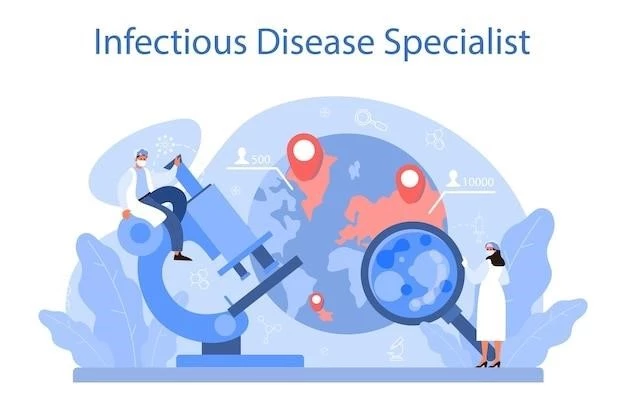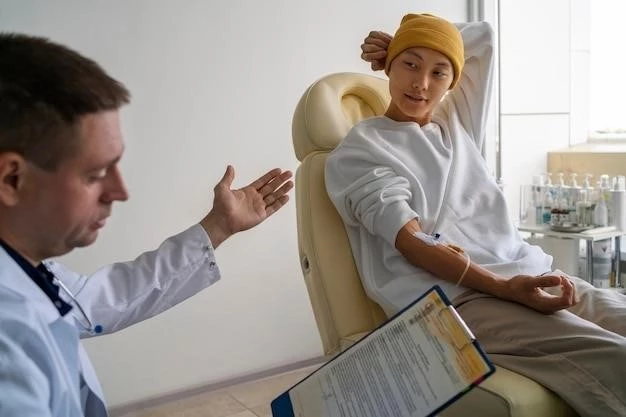Introduction to Onchocerciasis
Onchocerciasis‚ also known as river blindness‚ is a parasitic disease caused by the filarial worm Onchocerca volvulus. It is transmitted through the repeated bites of blackflies.
Onchocerciasis‚ commonly known as river blindness‚ is a parasitic disease caused by the filarial worm Onchocerca volvulus. This disease primarily affects the skin and eyes‚ leading to severe itching‚ skin manifestations‚ and potential blindness. It is transmitted through the repeated bites of blackflies‚ especially in tropical regions of Africa‚ Latin America‚ and Yemen.
Description of the Disease
Onchocerciasis‚ commonly known as river blindness‚ is a parasitic disease caused by the filarial worm Onchocerca volvulus. This disease primarily affects the skin and eyes‚ leading to severe itching‚ skin manifestations‚ and potential blindness. It is transmitted through the repeated bites of blackflies‚ especially in tropical regions of Africa‚ Latin America‚ and Yemen.
Onchocerciasis‚ or river blindness‚ is a significant cause of preventable blindness worldwide‚ particularly affecting regions such as sub-Saharan Africa‚ Latin America‚ and Yemen. The disease is transmitted by blackflies near fast-flowing rivers‚ with over 218 million individuals impacted in endemic areas. Efforts to eliminate the disease through treatments like ivermectin have been crucial in reducing its prevalence and impact on communities.
Socio-economic Impact
The socio-economic impact of onchocerciasis‚ or river blindness‚ is profound‚ especially in regions like sub-Saharan Africa where it causes significant morbidity and impedes economic development. The disease’s burden on individuals‚ families‚ and communities can result in lost productivity‚ increased healthcare costs‚ and reduced quality of life‚ highlighting the urgent need for effective control measures and elimination programs.
Prevalence and Distribution
Onchocerciasis‚ or river blindness‚ is a significant cause of preventable blindness worldwide‚ particularly affecting regions such as sub-Saharan Africa‚ Latin America‚ and Yemen. The disease is transmitted by blackflies near fast-flowing rivers‚ with over 218 million individuals impacted in endemic areas. Efforts to eliminate the disease through treatments like ivermectin have been crucial in reducing its prevalence and impact on communities.
Onchocerciasis‚ caused by the parasitic worm Onchocerca volvulus‚ is transmitted through the bites of infected blackflies‚ primarily in tropical regions. The worm’s life cycle involves both humans and blackflies‚ with the larvae migrating through the body and causing severe symptoms such as itching and skin manifestations. Effective treatment strategies are essential to combat the impact of this parasitic infection.
Transmission by Blackflies

Onchocerciasis‚ or river blindness‚ is primarily transmitted by blackflies of the genus Simulium. These insects breed near fast-flowing rivers‚ where they infect humans with the parasitic worm Onchocerca volvulus through their bites. The larvae develop within the human body‚ causing severe symptoms such as skin manifestations and potentially leading to blindness‚ particularly in tropical regions.
Parasitic Worm⁚ Onchocerca volvulus
Onchocerciasis‚ caused by the parasitic worm Onchocerca volvulus‚ is transmitted through the bites of infected blackflies‚ primarily in tropical regions. The worm’s life cycle involves both humans and blackflies‚ with the larvae migrating through the body and causing severe symptoms such as skin manifestations. Effective treatment strategies are essential to combat the impact of this parasitic infection.
Skin Manifestations
Onchocerciasis‚ or river blindness‚ presents with various skin manifestations such as severe itching‚ skin disfigurement‚ nodules‚ and depigmentation. These symptoms result from the presence of the parasitic worm’s larvae in the skin and can significantly impact the quality of life of affected individuals. Early diagnosis and appropriate treatment are crucial in managing these dermatological conditions associated with onchocerciasis.
Ocular Complications
Onchocerciasis‚ commonly known as river blindness‚ can lead to severe ocular complications including visual impairment and blindness. The parasitic infection caused by Onchocerca volvulus affects the eye tissues‚ resulting in inflammatory reactions‚ corneal damage‚ and ultimately vision loss. Early detection and treatment are crucial to prevent irreversible damage and improve the outcomes for individuals affected by these ocular manifestations.
Onchocerciasis‚ also known as river blindness‚ is a parasitic disease caused by Onchocerca volvulus‚ transmitted by blackflies. With significant skin and eye manifestations‚ this disease impacts global populations‚ especially in Africa‚ Latin America‚ and Yemen. Efforts are made to treat and eliminate onchocerciasis‚ emphasizing the importance of early detection and prevention.
Skin Biopsy
In diagnosing onchocerciasis‚ skin biopsies may be performed to detect the presence of the parasite’s larvae in the dermal tissues. This method involves extracting a small sample of skin and analyzing it under a microscope to identify microfilariae‚ the infective larvae of Onchocerca volvulus. Skin biopsies play a crucial role in confirming the infection and guiding appropriate treatment strategies for individuals affected by onchocerciasis.
Microscopy for Microfilariae Detection
The detection of microfilariae‚ the larvae of Onchocerca volvulus‚ through microscopy is a crucial diagnostic method for onchocerciasis. By examining skin samples under a microscope‚ healthcare providers can confirm the presence of these infective larvae‚ aiding in the accurate diagnosis of the disease. Microscopic examination plays a key role in identifying onchocerciasis in affected individuals and guiding appropriate treatment interventions.
Onchocerciasis‚ also known as river blindness‚ is a parasitic disease caused by Onchocerca volvulus‚ transmitted by blackflies. Efforts to eliminate the disease through treatments like ivermectin have been crucial in reducing its impact on global populations.
Ivermectin Therapy
Ivermectin therapy is a key treatment for onchocerciasis‚ effectively targeting the parasitic worms responsible for the disease. This medication aids in reducing the burden of infection‚ alleviating symptoms‚ and preventing further transmission of Onchocerca volvulus. Regular administration of ivermectin has been a cornerstone in the global efforts to control and eliminate onchocerciasis‚ particularly in endemic regions.
Other Medications and Interventions
In addition to ivermectin therapy‚ other medications and interventions are employed in the management of onchocerciasis. These may include antibiotics to address secondary infections‚ anti-inflammatory drugs to alleviate symptoms‚ and surgical interventions for complications such as severe skin lesions or ocular issues. Combining different treatment modalities can improve outcomes for individuals affected by onchocerciasis and contribute to the overall control and elimination of the disease.
Controlling the population of blackflies‚ the vectors that transmit Onchocerca volvulus‚ is essential in preventing the spread of onchocerciasis. Vector control measures include larviciding‚ environmental modifications to breeding sites‚ and the use of insecticidal strategies to reduce blackfly populations near rivers and endemic areas. Implementing effective vector control strategies plays a significant role in preventing the transmission of onchocerciasis.
Vector Control Measures
Implementing vector control measures is essential in preventing the transmission of onchocerciasis. Strategies like larviciding‚ insecticidal methods‚ and environmental modifications near rivers help reduce the population of blackflies responsible for transmitting the parasite. By targeting the vectors effectively‚ public health efforts can enhance the prevention of onchocerciasis transmission in endemic regions.
Community Health Education
Community health education plays a vital role in preventing onchocerciasis by raising awareness about the disease‚ its transmission‚ and ways to prevent infection. Educating communities about vector control measures‚ the importance of early treatment‚ and personal protection strategies can empower individuals to actively participate in disease prevention efforts. Through targeted educational initiatives‚ the impact of onchocerciasis can be minimized‚ leading to improved health outcomes for at-risk populations.
The World Health Organization coordinates global efforts to combat onchocerciasis through programs aimed at reducing transmission‚ providing treatment‚ and promoting preventive strategies. Collaborating with various stakeholders‚ the WHO implements initiatives to control the disease in endemic regions‚ emphasizing the importance of community engagement‚ vector control‚ and sustainable healthcare interventions to eliminate onchocerciasis worldwide.
Collaborative Partnerships for Onchocerciasis Elimination
Collaborative partnerships involving various stakeholders‚ including governmental agencies‚ non-governmental organizations‚ and communities‚ are crucial for achieving the elimination of onchocerciasis. By working together‚ sharing resources‚ and implementing targeted interventions‚ these partnerships contribute to the success of elimination programs‚ raising awareness‚ providing treatment‚ and implementing sustainable strategies to combat the disease.
World Health Organization Initiatives
The World Health Organization coordinates global efforts to combat onchocerciasis through programs aimed at reducing transmission‚ providing treatment‚ and promoting preventive strategies. Collaborating with various stakeholders‚ the WHO implements initiatives to control the disease in endemic regions‚ emphasizing the importance of community engagement‚ vector control‚ and sustainable healthcare interventions to eliminate onchocerciasis worldwide.

Research and development in onchocerciasis focus on the discovery of new drugs to improve treatment outcomes and combat drug resistance. Scientists explore novel compounds and therapeutic approaches to target the parasite‚ enhance treatment efficacy‚ and address the evolving challenges associated with onchocerciasis control. Staying at the forefront of drug development is crucial in the ongoing fight against this parasitic disease.
Advancements in Diagnostic Tools
Advancements in diagnostic tools for onchocerciasis involve the development of improved methods for detecting the presence of the parasite‚ such as molecular testing and antigen detection assays. These tools aim to enhance the accuracy and efficiency of diagnosing the disease‚ allowing for earlier interventions and improved management of onchocerciasis in affected individuals. Stay up-to-date with the latest advancements in onchocerciasis diagnostics to support effective control measures.
New Drug Development
Continued research into new drug development for onchocerciasis focuses on identifying novel therapeutic options to enhance treatment efficacy and combat potential drug resistance. Scientists strive to develop medications that target the parasite effectively‚ improving outcomes for individuals affected by the disease. Stay informed about the latest advancements in drug development to support the fight against onchocerciasis.
One of the challenges in onchocerciasis control is the development of drug resistance‚ particularly in response to medications like ivermectin. Persistent efforts are underway to monitor resistance patterns‚ develop alternative treatment strategies‚ and address the emergence of resistant parasite strains to ensure the continued effectiveness of treatment regimens in affected populations.
Challenges in reaching remote areas hinder the efficient delivery of onchocerciasis control interventions and treatment programs. Limited access to isolated communities‚ lacking healthcare infrastructure‚ and logistical constraints pose obstacles in providing adequate healthcare services and preventive measures; Addressing these accessibility barriers is crucial in ensuring widespread coverage and success in controlling onchocerciasis in hard-to-reach regions.
Drug Resistance
One of the challenges in onchocerciasis control is the development of drug resistance‚ particularly in response to medications like ivermectin. Persistent efforts are underway to monitor resistance patterns‚ develop alternative treatment strategies‚ and address the emergence of resistant parasite strains to ensure the continued effectiveness of treatment regimens in affected populations.
Integration with Other Disease Control Programs
Integrating onchocerciasis control efforts with existing disease control programs can enhance public health responses and optimize resource utilization. Coordination with initiatives targeting related health issues‚ such as lymphatic filariasis or malaria‚ allows for synergistic approaches to healthcare delivery‚ surveillance‚ and treatment strategies. By integrating onchocerciasis control into broader health programs‚ a more comprehensive and sustainable impact can be achieved in affected communities.
Accessibility to Remote Areas
Challenges in reaching remote areas hinder the efficient delivery of onchocerciasis control interventions and treatment programs. Limited access to isolated communities‚ lacking healthcare infrastructure‚ and logistical constraints pose obstacles in providing adequate healthcare services and preventive measures. Addressing these accessibility barriers is crucial in ensuring widespread coverage and success in controlling onchocerciasis in hard-to-reach regions.
Impact on Health Systems
Onchocerciasis significantly impacts health systems in endemic regions due to the disease’s burden on resources‚ healthcare infrastructure‚ and personnel. The management of onchocerciasis requires dedicated funding‚ trained healthcare professionals‚ and sustainable intervention strategies to address the challenges posed by the disease. Integrating onchocerciasis control into broader health systems is essential for effective disease management and public health improvement in affected areas.
Reviewing case studies and success stories in onchocerciasis elimination provides valuable insights into effective strategies and outcomes. By examining specific regions’ efforts‚ such as elimination programs in Africa or community engagement models in Latin America‚ lessons learned can inform future initiatives and drive progress towards the global eradication of onchocerciasis.
Case Studies and Success Stories
Exploring specific case studies and success stories in onchocerciasis elimination efforts provides valuable insights into effective strategies and the impact of interventions in different regions. By analyzing successful initiatives such as community engagement models or elimination programs in specific areas‚ lessons learned can be applied to enhance future onchocerciasis control and elimination endeavors globally.
Community Engagement Models
Community engagement models play a crucial role in onchocerciasis control by involving local communities in disease prevention and treatment initiatives. By fostering community participation‚ raising awareness‚ and promoting ownership of healthcare interventions‚ these models empower individuals to take an active role in combating onchocerciasis. Successful community engagement can lead to increased treatment coverage‚ improved health outcomes‚ and sustainable disease control efforts.
Future Outlook for Onchocerciasis
The future outlook for onchocerciasis focuses on global elimination efforts‚ advancements in treatment strategies‚ and research into new drug development and diagnostic tools. Despite challenges such as drug resistance and accessibility issues‚ ongoing initiatives aim to enhance disease control‚ improve healthcare systems‚ and ultimately work towards the sustainable elimination of onchocerciasis worldwide.
Prospects for Global Elimination
The prospects for global elimination of onchocerciasis are promising‚ driven by extensive treatment programs‚ research advancements‚ and collaborative efforts. Enhanced strategies‚ such as community-directed treatment and vector control‚ have shown positive outcomes in reducing disease prevalence. With continued focus on innovative interventions and sustained commitment‚ the goal of eliminating onchocerciasis globally is within reach.
Ongoing Challenges and Mitigation Strategies
Onchocerciasis control faces ongoing challenges like drug resistance and accessing remote areas. Strategies to overcome these obstacles include surveillance for resistance patterns‚ development of alternative treatments‚ and innovative solutions for reaching isolated populations. By addressing these challenges effectively‚ the global effort to combat onchocerciasis can advance towards successful disease control and elimination.
Efforts in raising awareness and advocacy for onchocerciasis aim to highlight the impact of the disease‚ promote preventive measures‚ and ensure access to treatment. Public awareness campaigns play a vital role in educating communities about the risks of onchocerciasis and the importance of early detection. Non-governmental organizations play a significant role in advocating for increased funding‚ research‚ and support towards combating this neglected tropical disease.
Awareness and Advocacy for Onchocerciasis
Public awareness campaigns and advocacy efforts for onchocerciasis aim to educate communities about the disease‚ preventive measures‚ and treatment options. By raising awareness about the impact of onchocerciasis and advocating for adequate resources‚ research‚ and support‚ organizations can foster greater understanding‚ engagement‚ and support in the fight against this parasitic infection.
Role of Non-Governmental Organizations
Non-Governmental Organizations (NGOs) play a pivotal role in supporting onchocerciasis control efforts through advocacy‚ resource mobilization‚ and community engagement. By raising awareness‚ providing access to care‚ and promoting research and innovation‚ NGOs contribute significantly to the fight against onchocerciasis. Their involvement is essential in ensuring sustainable progress and global cooperation in tackling this neglected tropical disease.
In conclusion‚ onchocerciasis poses significant health challenges globally‚ but with concerted efforts‚ including advocacy‚ research‚ treatment innovation‚ and community engagement‚ the prospects for disease control and elimination are promising. Continued focus on public awareness‚ collaboration with NGOs‚ and sustainable strategies are key to ultimately eradicating onchocerciasis and improving public health outcomes in affected regions.
Summary of Key Points
Onchocerciasis‚ also known as river blindness‚ is a parasitic disease caused by Onchocerca volvulus and transmitted by blackflies. It leads to severe itching‚ skin manifestations‚ and potential blindness. The global effort to control onchocerciasis includes treatments like ivermectin‚ community engagement‚ and advocacy to raise awareness and support ongoing elimination programs.
Call to Action for Continued Support and Commitment
Urgent action is needed to sustain efforts in combating onchocerciasis. Continued support through funding‚ research‚ advocacy‚ and collaboration is essential for achieving global elimination goals. By maintaining commitment to innovative strategies‚ treatment programs‚ and community engagement‚ we can work together to overcome challenges and make significant progress towards eradicating onchocerciasis worldwide.
